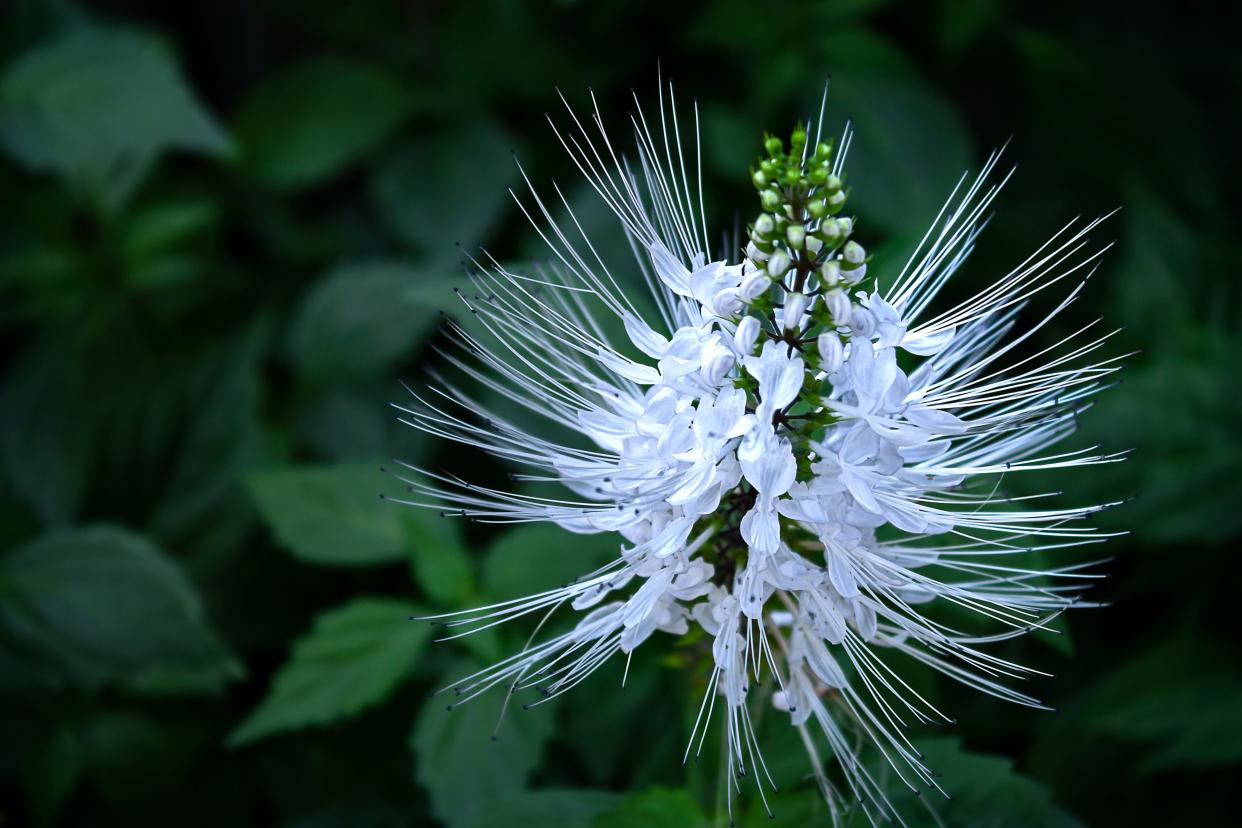CHARLES REYNOLDS: Cat’s whiskers stands out in the landscape

Cat’s whiskers is a great plant for cool-season flowers in light shade. Install this evergreen perennial soon to enjoy its blossoms this fall. Native from Southeast Asia to Australia, this 2-to-3-foot species (Orthosiphon aristatus) is also known as Java tea because it’s the basis for teas popular in Asia. Cat’s whiskers bears white or lavender blossoms from mid-autumn deep into spring. The flowers feature lengthy stamens that resemble cat’s whiskers and make them stand out in the landscape. The species is part of the mint family, growing rapidly on organically enriched, mulched sites. Leggy specimens can be cut back to promote dense growth and heavy flowering. A herbaceous plant that’s related to Pentas and to species of Salvia, cat’s whiskers is easily propagated with warm-season cuttings. Plants are available online.
AUTUMN VEGETABLE SEASON SNEAKING UP
Although it seems too soon to prepare for autumn vegetable planting, it’s not: Numerous vegetables can be planted as early as mid-August. They include watermelon, pole bean, pepper, eggplant, pumpkin, Swiss chard and summer and winter squash. Prepare your beds by liberally spreading manures and compost over the sites and blending these materials at least 8 inches deep with a rototiller or shovel. Even if you don’t intend to plant until September or October — when the season’s in full swing — getting started now is a good idea.
SWEETGUM TREE DEMANDS CAREFUL PLACEMENT
A native shade tree, sweetgum bears inedible fruit that can cause problems. The sweetgum (Liquidambar styraciflua) grows over 100 feet tall, featuring an upright, narrow canopy and star-shaped leaves. And while raking fallen leaves in late autumn and early winter can be a chore, it’s the tree’s spherical, spiny fruit that pose a hazard. Stepping on one in bare feet can be a painful experience, so set trees away from areas where that could pose a danger. And surprisingly for a species native to parts of ‘’hurricane alley,’’ sweetgum’s branches are reportedly brittle.
PRUNING AZALEAS
If you haven’t finished pruning azalea plants that need trimming, do it this weekend. Azaleas pruned any later will bloom less heavily next spring because you’d be removing flower buds that are already developing. Use some of the pruned-off stems to propagate new plants.
PRETTY NAME FOR PRETTY PLANT
Can a species that’s tough-as-nails be among the prettiest plants in our gardens? It can be if it’s black-eyed Susan (Rudbeckia hirta). Native from Southern Canada to South Florida, this short-lived but freely reseeding perennial has long been used to beautify roadsides and highway medians. That’s because black-eyed Susan’s yellow and purple-brown floral display is so charming from late spring into autumn, especially when plants are massed. The species is at its best in full or part-day sun on moist or wet sites, but it adapts to conditions in irrigated gardens. Propagate by seed. Plants and seeds are available online.
This article originally appeared on The Ledger: WEEKEND PLANTINGS

